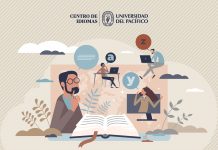Nowadays, a great deal of attention is paid to English tuition at schools. On one hand, schools offering intensive English training; on the other, schools which still need great improvements; however, what happens at university has been little explored. This article will give us an insight into the aspects needing to be addressed.
Lack of fixed standards
Universities have only now begun to pay attention to their students’ foreign language skills. As we know, there is no single law stipulating what level of proficiency students should reach by the end of their degree; in some cases just a certificate of studies will do, though how much they have learnt is highly questionable. Besides, the reality of universities is that they receive highly heterogeneous students in terms of language proficiency, basically due to the situation explained above. Universities deal with this in two ways: by establishing levels at a certain point during the 5-year course, or by simply handing over the responsibility to the students themselves.
Opportunities gone to waste
However, there are now a large number of opportunities for university students and lecturers thanks to International Relations Offices: international mobility programmes, international exchanges, scholarships and so on. In many cases, the universities involved are from English-speaking countries. What is happening? These opportunities are wasted– because most of the times, applicants need to demonstrate a sound competence in the foreign language, usually at B2 or C1 levels, which is far from what they have attained. An example: when the 2013 Presidente de la República Scholarships were awarded, the first three countries in the number of scholarships were Spain, Argentina and Chile. English-speaking countries pale in comparison. The point is, why are such brilliant opportunities missed? Would it not be desirable for students to experience life and academic standards abroad to complement their education?
General vs Academic English
In addition, we should ask ourselves: What kind of English do university students need to learn? It is true that the foundation is given by general English, but in reality, it is EAP (English for Academic Purposes) which should be taught at some point. Naturally, this involves a transition which needs to happen when the students are comfortable enough with general English. The problem is, as explained above, that university students are a highly heterogeneous group, and so it cannot be guaranteed that after, say, two years of English tuition, everybody will be prepared to undertake Academic English. This has to do, on one hand, with the type of courses offered. Many universities offer courses of “specialised” English (ESP) which mostly focus on professional terminology, but which fail to develop all-round language competence. On the other hand, lecturers in charge of English courses may need further training so that they raise their students’ awareness of the use of English in academic and professional contexts, and taking advantage of their skills, gradually go from a receptive to a more productive stage in order to better prepare them for any later opportunities.
We can conclude by saying that the task of improving ELT at Peruvian universities is still in its infancy, but it is good to see that some institutions are already taking steps to help their students access different opportunities abroad.
References:
Asamblea Nacional de Rectores e Instituto de Estadística e Informática (2010). II Censo Nacional Universitario. Lima, Perú: Dirección Nacional de Censos y Encuestas.
Hyland, K. (2006). English for Academic Purposes. Oxon, England: Routledge.
Kuder, M; Lemmens, N & Obst, D. (2014). Global Perspectives on International Joint and Double Degree Programs. German Academic Exchange Service & Institute of International Education.
Jenkins, J. (2014). English as a Lingua Franca in the International University. Oxon, England: Routledge.
Programa Nacional de Becas y Crédito Educativo.(2013). Memoria Anual 2013. Lima, Perú: Autor. Retrieved from: http://www.pronabec.gob.pe/inicio/publicaciones/documentos/memoria2013.pdf
Estimated reading time: 3 minutes, 10 seconds











extreme immoderate exorbitant undue overmuch disproportionate unreasonable intemperate Antonyms for EXCESSIVE? Global Entrepreneurial University
Comments are closed.